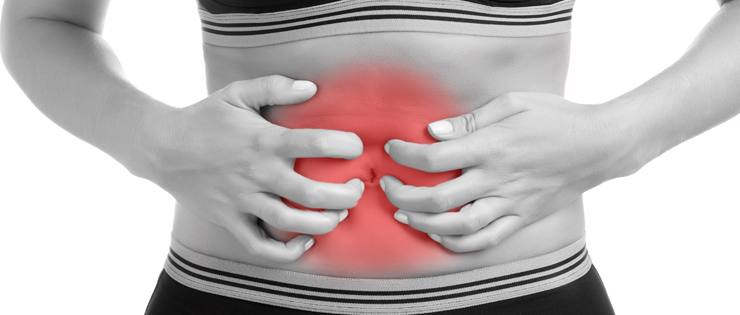
Inflammatory Bowel Disease (IBD) is comprised of two major disorders - Crohn's disease and Ulcerative Colitis.
Social media campaigns have recently raised awareness of just how debilitating IBD can be for the 70,000 Aussies out there affected.
Unfortunately, many people suffer in silence, restricted in their work, socializing, and fashion by their IDB and its consequences. Campaigns such as “The Great Bowel Movement” and “Get Your Belly Out” are breaking down the barriers, increasing awareness, and allowing IBD sufferers to live a more normal life.
So just what is Inflammatory Bowel Disease?
IBD results from an abnormal immune system attack, causing patches of swelling and inflammation on the walls of the digestive tract - our bowels.
The main difference between the two diseases is the extent of inflammation they cause.
Colitis only affects the large bowel (colon and/or rectum), and inflammation is only in the surface layers of the bowel lining.
Crohn’s disease can affect any part of the digestive tract from mouth to anus (bum) but usually affects the last section of the small bowel (the ileum) and/or the colon. Inflammation can extend into the entire thickness of the bowel wall.
Risk Factors
We don't really know what triggers the immune system to attack our body this way, but we know the main risk factors. These conditions can pop up at any age, however they tend to occur between the ages of 15 to 30, and more often in the ladies.
There’s some family influence, with up to 25% of suffers having a close relative with the condition. Smoking increases the risk of Crohn’s Disease, but oddly seems to protect against Ulcerative Colitis. And having an appendectomy seems to be protective – can’t tell you why!
Antigens in food are thought to trigger immune mechanisms in IBD, but the exact foods haven’t been found yet. However, the ‘western style’ diet high in processed, fatty, and sugary foods has been implicated.
Because the lining of our bowels is affected, nutrients and fluid are not absorbed properly from the diet. This leads to symptoms like diarrhoea, cramping, and pain. When severe, sufferers may also notice mucous or blood in the bowels, tiredness, and weight loss. These are frustrating as they tend to come and go, which can often complicate matters, as sufferers tend to ignore their treatment when well, which only makes matters worse in the long run.
If the patches of inflammation are left untreated, they can lead to ulceration and permanent damage, which can ultimately cause rupture, blockage, cancer, and even death in an unlucky few.
Treatment
Whilst IBD can’t be cured, symptoms can usually be managed using medications that control inflammation, plus special diets. Sometimes surgery is required to remove permanently damaged or blocked sections of bowel.
This is eventually required in about a third of ulcerative colitis patients, and up to three quarters of Crohn’s patients.
Sometimes the surgery is simple, however, it’s often complicated, resulting in the entire large bowel being removed. When this happens, the bowel gets redirected, and you’re left with a colostomy bag attached to your skin.
But how is IBD diagnosed?
There is no single test that we use to diagnose IDB. Doctors usually combine a bunch of tests together, but the main one needed is the colonoscopy.
The colonoscope is a flexible camera on the end of a long tube – the black snake! About the size of your index finger, it’s inserted into the anus, affording the doctor a perfect colour vision view of your insides, from your bum all the way through the large bowel. Once inside, the doctor is looking out for tell tale inflammation signs, and may take little biopsies (samples of tissue) to send to the lab. Once in the lab, nerdy pathologists use microscopes to confirm the diagnosis.
Hang on a minute, am I awake?
Colonoscopies always involve sedation. You’re awake, but in a dreamy state, so you won’t feel much, and remember even less! The whole process is over and done with in about half an hour.
My friend ‘Meryl’ said I have to ‘prepare’, what does that mean? The whole procedure relies on the doctor being able to get a good look at what they’re doing. If the bowel is still ‘dirty’ (full of stool), then you’ll only be going through the whole process again down the track.
To ‘prepare’ properly, you’ll be given a special diet for a few days prior to reduce the bulk of the stool. A fibre-free diet is commenced about three days prior to the colonoscopy. Foods such as fruit, vegetables, wholegrain cereals, nuts and seeds need to be eliminated.
Next a super charged laxative is drunk. Think of it like draino, because it will certainly clear you out, ensuring a crystal clear view!
Inflammatory Bowel Disease is a serious condition, but if you look after yourself, it shouldn't rule your life. Chat with your friendly doctor if you have any concerns.